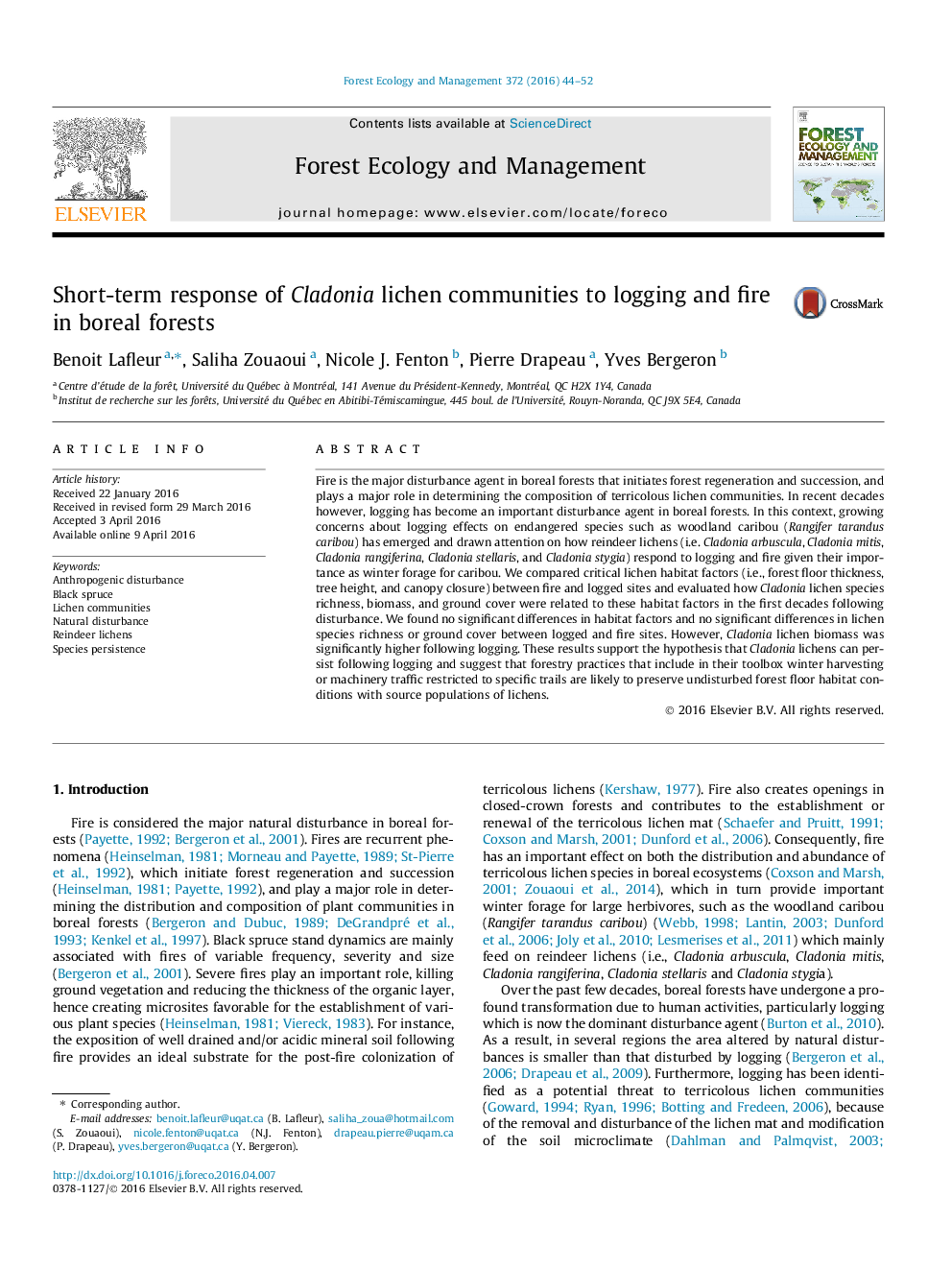| Article ID | Journal | Published Year | Pages | File Type |
|---|---|---|---|---|
| 6542272 | Forest Ecology and Management | 2016 | 9 Pages |
Abstract
Fire is the major disturbance agent in boreal forests that initiates forest regeneration and succession, and plays a major role in determining the composition of terricolous lichen communities. In recent decades however, logging has become an important disturbance agent in boreal forests. In this context, growing concerns about logging effects on endangered species such as woodland caribou (Rangifer tarandus caribou) has emerged and drawn attention on how reindeer lichens (i.e. Cladonia arbuscula, Cladonia mitis, Cladonia rangiferina, Cladonia stellaris, and Cladonia stygia) respond to logging and fire given their importance as winter forage for caribou. We compared critical lichen habitat factors (i.e., forest floor thickness, tree height, and canopy closure) between fire and logged sites and evaluated how Cladonia lichen species richness, biomass, and ground cover were related to these habitat factors in the first decades following disturbance. We found no significant differences in habitat factors and no significant differences in lichen species richness or ground cover between logged and fire sites. However, Cladonia lichen biomass was significantly higher following logging. These results support the hypothesis that Cladonia lichens can persist following logging and suggest that forestry practices that include in their toolbox winter harvesting or machinery traffic restricted to specific trails are likely to preserve undisturbed forest floor habitat conditions with source populations of lichens.
Related Topics
Life Sciences
Agricultural and Biological Sciences
Ecology, Evolution, Behavior and Systematics
Authors
Benoit Lafleur, Saliha Zouaoui, Nicole J. Fenton, Pierre Drapeau, Yves Bergeron,
